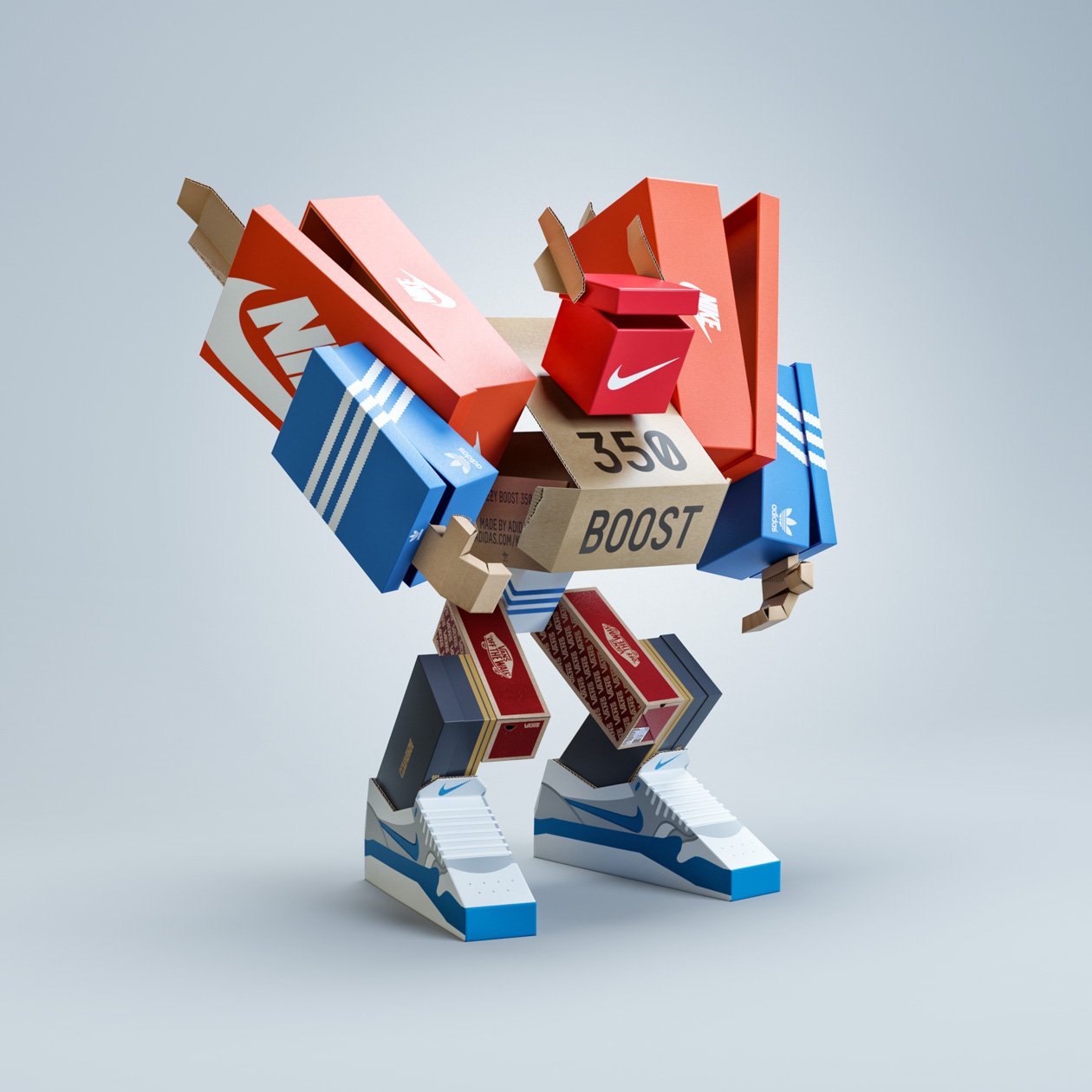FOREAL Studio
“Battle of the Bites” illustration series for Fast Company by FOREAL Studio
FOREAL is a design studio based in Germany that was founded in 2013 by Dirk Schuster and Benjamin Simon. With a focus on crisp, high-end animation, illustration, and art direction, FOREAL creates unforgettable work infused with attitude and whimsy. The FOREAL crew has produced work for agencies, magazines, publishers, and some of the world’s best-known brands including IKEA, Google, Spotify, and XBOX.
Tell us about yourselves - how did you get to where you are today? What’s the origin story of FOREAL?
We (founders Benjamin Simon and Dirk Schuster) first crossed paths in 2011 while attending vocational school as apprentices in media design. We quickly became close friends, living and studying together, and in 2013, decided to establish FOREAL. Initially, we started as an illustration studio, creating still images for advertising and editorial purposes.
For the first four years, it was just the two of us, occasionally working with interns. As our projects grew in scope and complexity, we began to explore the animation industry, which led us to expand our team. Today, FOREAL is a vibrant studio with nine exceptionally talented individuals.
The FOREAL Studio Team
How would you describe your aesthetic and how has it evolved over time?
Our style is deeply rooted in CGI and 3D illustration, characterized by bold and playful imagery with a tactile and photorealistic quality. We place a strong emphasis on intricate details and meticulous craftsmanship. Initially, our work focused on stills and illustrations, but over time, we have increasingly embraced animation.
Through our personal projects, and ideally our commercial ones as well, we strive to push creative boundaries and explore new possibilities. Humor is also a significant aspect of our style—we love to entertain and aren’t afraid to incorporate a joke, even if it’s a bit inappropriate.


Early on, your work was focused on still images and today you produce crisp, high-end animations and illustrations infused with personality. What drew you to animation and illustration?
Two main forces drove us towards animation. First, our desire to infuse more life and personality into our work, making it even more entertaining and engaging. Second, the market’s demands played a significant role. In today’s social media-driven world, the need for animated content has grown due to shorter attention spans and the necessity for more dynamic visual stimulation. As advertising increasingly shifted towards animation, we adapted to meet these demands, allowing us to create work that resonates more deeply with audiences.
FOREAL has partnered with an impressive roster of ad agencies, magazines, and publishing houses, and you’ve produced beautiful, exceptional creative work for some of the world’s best-known brands including Apple, Google, IKEA, Microsoft, Netflix, and Samsung. How do you approach creative collaboration with your clients?
Typically, we are approached by major clients or agencies when they already have a creative vision in mind and feel confident that our style aligns with their needs. Much of our creative style development happens in our personal projects, where we experiment with new ideas and aesthetics. These personal projects often serve as a source of inspiration for clients, leading them to choose us for collaboration. This process ensures that by the time we start working together, there is already a clear understanding and mutual appreciation of the creative direction. This allows us to seamlessly integrate our unique style into their vision, resulting in a successful and cohesive collaboration.





Google Next Campaign by FOREAL
Speaking of personal projects, the FOREAL website features a really fun “Playground” section that showcases personal work, experiments, and more. What’s your philosophy on the importance of having personal projects in addition to client work? Do you have any tips for finding balance and making time for personal projects?
As mentioned previously, personal projects are crucial for our creative development and exploration. However, finding a balance and making time for these projects is increasingly challenging. Personal projects allow us to experiment, push creative boundaries, and develop new ideas and aesthetics that often inspire our client work.
Interestingly, some of the pieces in our Playground section are the result of R&D from client projects that didn’t make it into the final versions. These personal endeavors are vital for keeping our creativity alive and evolving, even though balancing them with client work can be difficult. Our tip is to view personal projects as an integral part of the creative process and to incorporate them wherever possible, even if it means using unfinished or experimental work from client projects.







What’s been one of the biggest career lessons you’ve learned so far?
We’ve learned two significant lessons in our career.
First, good design and graphics evolve over time through numerous revisions. It’s essential to start with a basic concept and continuously fine-tune it. The iterative process is where the magic happens, and patience is crucial.
Second, effective client communication and expectation management are key to maintaining happy clients. Clear and consistent communication ensures that clients are always in the loop, and managing their expectations helps prevent misunderstandings and ensures that the final product aligns with their vision.
These two aspects are fundamental to our success and client satisfaction.





Where do you find inspiration?
Everywhere. We dont have a fancy answer for this, it might be Instagram, Pinterest or even AliBaba.
What advice would you give to designers just starting out?
Nothing new that hasn’t been said before:
Build a Strong Portfolio: Your portfolio is your best tool for showcasing your skills and creativity. Focus on quality over quantity, and include personal projects that reflect your unique style and passion.
Be Open to Feedback: constructive criticism is invaluable. It can help you see your work from different perspectives and improve your designs. Listen to feedback from peers, mentors, and clients, and use it to refine your work.




